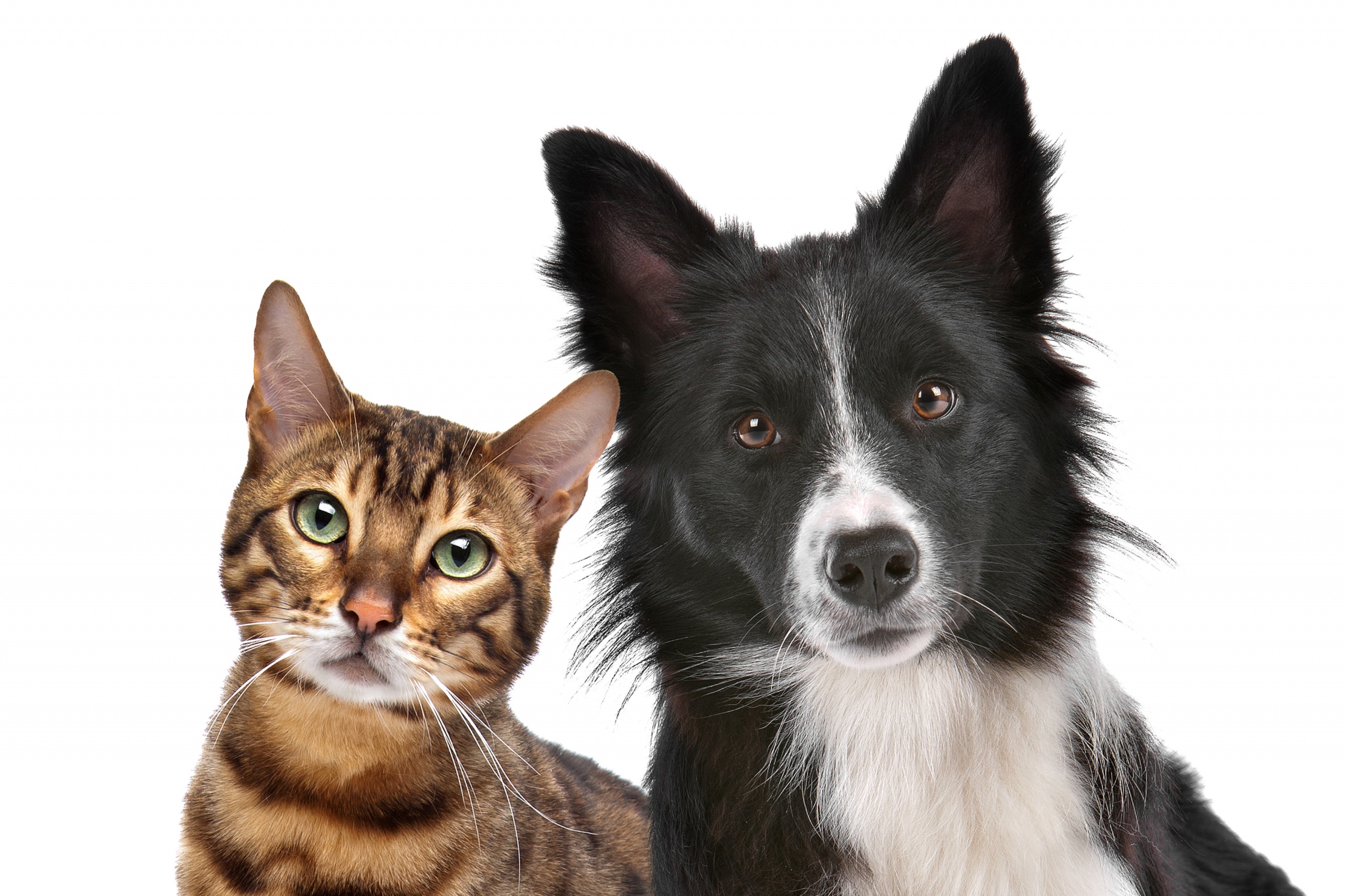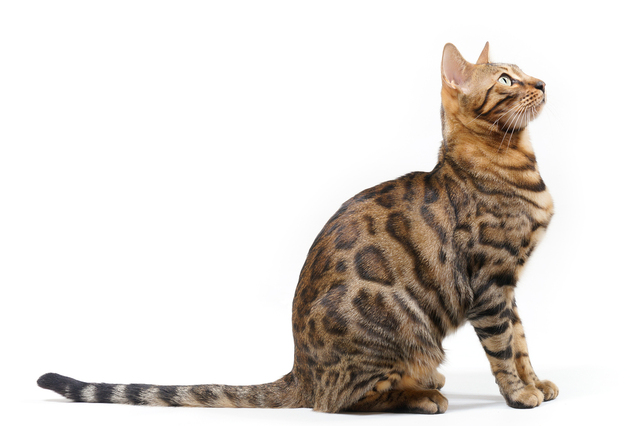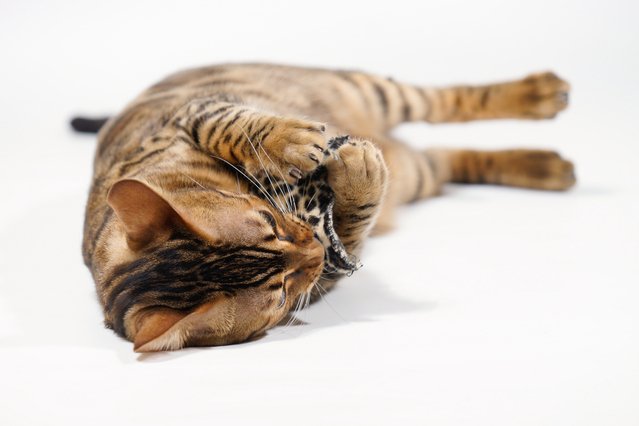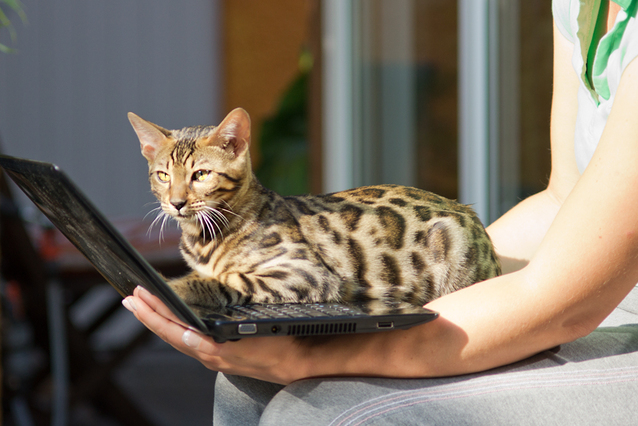If you are like me, you may have thought it’s probably not a good idea to keep both a Bengal cat and a dog together.
But like me, you’d be wrong.
It turns out, that Bengals and dogs may actually be ideal ‘pet partners’.
In this post you will discover:
- How and why Bengal cats and dogs can cohabit successfully
- Which breeds of dog are best suited to Bengals
- Tips on introducing your new pet
Reason #1: Bengal Cats and Dogs are Social Animals
People often want their pets to be part of their family unit.
Dogs, which evolved from the wolves, are pack (and so social) animals and therefore humans essentially become part of ‘the pack.’
Cats do not typically form social groups, although lions do live in prides.
Lions aside, Bengals are considered a more sociable breed of cat and therefore there is a good chance a Bengal will coexist happily with your dog.
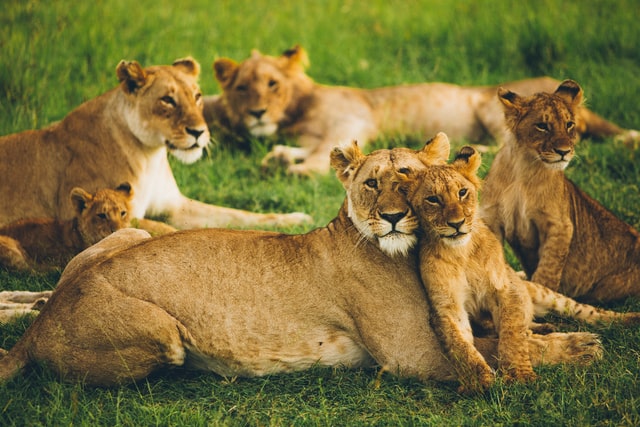
Your dog will simply view a Bengal as another member of the pack- quite possibly a higher ranked member.
The plus for your Bengal is that it will have another animal with which to socialise.
That’s only in terms of play- they won’t be going out for drinks or anything, although who knows what they get up when humans aren’t around?
And like dogs, Bengals typically like to interact with people, play and vie for attention.
Reason #2: Bengals and Dogs have Different Territorial Needs
Opposites can attract.
And this is true of dogs and cats with regards to ‘territory.’
Essentially, neither pose a threat to each other- only perhaps when demanding your attention.
This is because although a Bengal cat is territorial, your dog being of a different species, is not perceived as an invader or threatening that space.
Dogs do not have the same territorial requirement that perhaps another pet cat would want.
Therefore any potential conflict is generally avoided.
Reason #3: Bengal Cats are Intelligent
Having said ‘opposites attract’ in the previous section, it is also true that having common traits increases the likelihood of two individuals getting along.
How much easier is it, for example, to converse with someone who has a similar intellectual level to your own?
Now, I’m not saying your Bengal and your dog are going to sit and discuss the pros and cons of post-modernism.
Let’s face it, we wouldn’t even know if they did…
“Both dogs and cats have been shown to discriminate between the voices of different humans.”
Stephen E. G. Lea et al 2016
But Bengals are notorious (anecdotally) for being at the smarter end of the cat spectrum.
One breeder told me her cat has worked out how to open windows and doors even those with multiple locks (I assumed keys were not involved).
Are Bengal cats smarter than dogs?
This is a hard one to say definitively as dogs too, are considered to have a reasonably high cognitive ability, although this research paper suggests ‘dog intelligence’ may not actually be anything ‘special’ when compared to dolphins, chimpanzees and yes, cats, (amongst others).
So how is this intelligence compatibility beneficial?
Both species are then likely to engage in activities that stimulate both and meet their mutual needs.
But not play scrabble or anything like that.
Reason #4: Bengal Cats are Very Active
Having established a Bengal cat and dog are mentally compatibility, you may be wondering about their relative physical requirements.
Well there is good news here too.
The stereotypical idea of a lazy lap cat can be thrown out when it comes to Bengals, especially when they’re young.
Although this isn’t always the case…
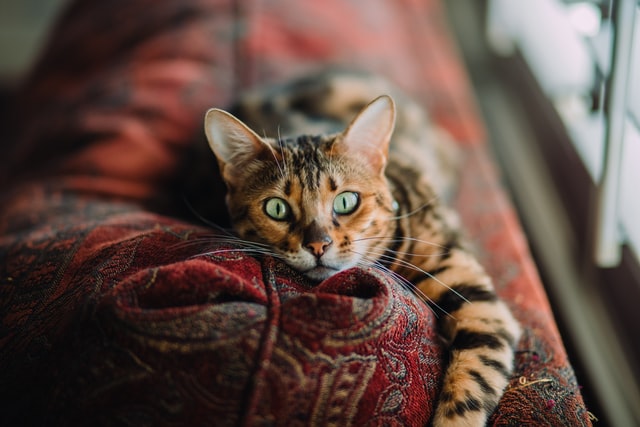
That’s because alongside their intelligence they are also considered to be more energetic and inquisitive.
Which is quite a combination and a potential handful for people who are keeping their Bengal as a house cat.
Dogs can also have energy to burn and must be exercised regularly.
Two animals that need to be active then are far more likely to get along, play and exercise together.
Reason #5: Bengals Can Be Taken For Walks
Dog owners will be familiar with the needs of their pet to be walked.
Cats are (usually) free to explore outside of the home and independently fulfil their exercise requirements.
This independence sadly cannot often be afforded to Bengals due to the fact that they are a one of the cat breeds at high risk of being stolen.
But there is an alternative.
With their high(er) intelligence and energy levels, Bengals are PRIME candidates for leash training.
Yes, you can take a Bengal for a walk. With a dog:
See.
Reason #6: Cats and Dogs Don’t Hate Each Other
“They fight like cats and dogs,” so the saying goes.
Thanks to societal brainwashing in the form of cartoons and a human imposed animal-based hierarchy, we tend to think cats and dogs are natural enemies that can’t coexist as pets.
But this simply isn’t true.
Animals with the appropriate temperament, introduced to each other carefully and slowly can get along or, if necessary, be trained to.
I have personally visited a breeder with multiple Bengal cats of all ages, who also owns two large dogs (the breed of which eludes me- I think they were labradors) and a parrot.
Not sure what the parrot made of it all. Didn’t ask.
The Best Dogs For Bengal Cats
Some dog breeds are better to suited to living alongside a Bengal cat than others.
In general, those that were once bred as working dogs, or for use in sport (spaniels and retrievers) possess traits that make them MORE LIKELY to cohabit peacefully with a Bengal.
And ‘more likely’ is the key- there can be no guarantees, as individuals within a breed will differ.
Dogs that are easy to train are also (more likely to be) well suited.
These are the most common dog breeds that cropped up when researching this subject (in no particular order):
Beagle: The pack animals trait was utilised by humans with regards to the Beagle for hunting purposes. Beagles then are typically good with other animals. However, I have also seen this breed appear on lists of dog breeds to avoid pairing with a cat…
Golden Retriever: A popular pet owing to their typically gentle nature and being highly trainable- so should get along nicely with your Bengal.
Cavalier King Charles Spaniel: Oddly, they were bred in 16th century England to help keep wealthier people warm. Small, loyal and friendly, the Cavalier King Charles Spaniel (below) should readily adapt to living alongside a cat.

Basset Hound: Like the Beagle, used by humans in packs as scent dogs, Basset Hounds are typically well behaved, laid back dogs and make good companions for other pets.
Pug: Small, sociable dogs who are said to enjoy the company of humans and cats alike.
Labrador Retriever: Adaptable and intelligent, a Labrador-Bengal combination should prove to be a successful one.
Dog Breeds To Avoid
There are some that, owning to how and why they were bred, are less suited to living with a Bengal.
These are typically breeds used to hunt and kill pests or game- although this isn’t completely accurate as Basset Hounds for example, were used on hunts as scent dogs.
Again, not all individuals share typical breed traits and indeed training at an early age can work for even the following dogs:
- Terriers
- Hounds such as the Wolfhound, Afghan, Grey and Deer
- Australian Cattle Dog
- Weimaraner (I had to look it up too)
- Schnauzer
Do Bengal Cats Need Companions?
Bengals are considered more sociable than other cats, other than perhaps say, lions.
As to whether they ‘need’ a companion- again that will depend on the individual cat and your own set of circumstances.
Bengals tend to require more mental and physical stimulation than other breeds.
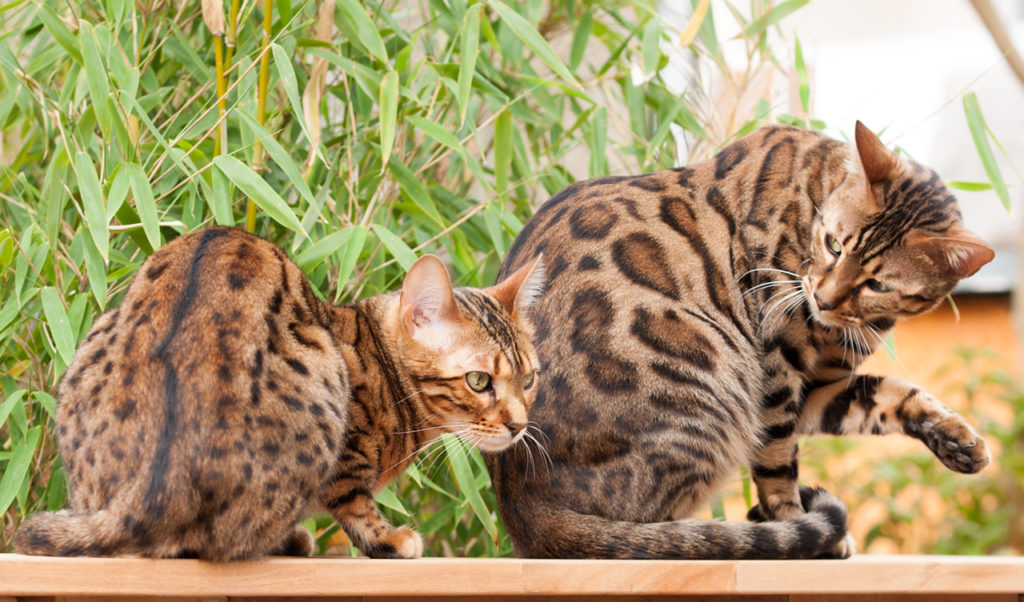
This is why playing with your cat, teaching it tricks or allowing it some kind of access to the outside world is essential for its wellbeing.
And if this can’t be provided by you, then a companion pet- dog or cat, could well be a good idea.
Indeed, some breeders WILL ONLY sell Bengal kittens in pairs as the need for stimulation is so high.
Summary
This article goes someway to answering the question “Can Bengal cats live with dogs?”
In fact, dogs may be THE IDEAL pet companion for your Bengal.
Bengal cats act like dogs in many respects as both are intelligent, active, sociable and can be taken out for walks.
Conversely, although their territorial needs differ, they are complimentary.
Other elements may also be advantageous.
For example, although not strictly necessary, it can help if your kitten has come from a home where it grew up alongside dogs.
It is important to remember however, that each Bengal cat and dog is unique so some of the topics discussed in this article may not apply to yours.
It’s a case of knowing your animal(s).
Tips on Introducing a New Cat or Dog
Keep your new arrival in a separate room if possible, giving it the time and space it needs to adjust to its new home.
Provide your new dog or cat with an item that carries the scent of the resident animal. Similarly, provide your older pet with something covered in the scent of the new. So called ‘scent swapping’ builds familiarity.
Once they become comfortable with each other’s scent, (a day or so should suffice), allow them to briefly see each other.
Let the new arrival to explore your home fully (without the resident pet present), again to familiarise themselves.
When you have determined your pets ready to meet, try to maintain a degree of separation initially by creating a pen/barrier or by dividing the room.
Reward both for positive behaviour.
Do things slowly and don’t force the two animals together especially if they display signs of stress or aggression.
Only leave the two animals alone as a pair once completely satisfied they will not harm each other.
Note that the above sequence may have to be followed at a slower pace with an older/adult Bengal cat.
Further Reading:

